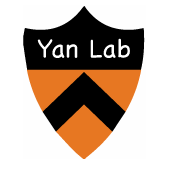Structure and activation mechanism of the Drosophila initiator caspase Dronc
Type
Activation of an initiator caspase is essential to the execution of apoptosis. The molecular mechanisms by which initiator caspases are activated remain poorly understood. Here we demonstrate that the autocatalytic cleavage of Dronc, an important initiator caspase in Drosophila, results in a drastic enhancement of its catalytic activity in vitro. The autocleaved Dronc forms a homodimer, whereas the uncleaved Dronc zymogen exists exclusively as a monomer. Thus the autocatalytic cleavage in Dronc induces its stable dimerization, which presumably allows the two adjacent monomers to mutually stabilize their active sites, leading to activation. Crystal structure of a prodomain-deleted Dronc zymogen, determined at 2.5 A resolution, reveals an unproductive conformation at the active site, which is consistent with the observation that the zymogen remains catalytically inactive. This study revealed insights into mechanism of Dronc activation, and in conjunction with other observations, suggests diverse mechanisms for the activation of initiator caspases.

